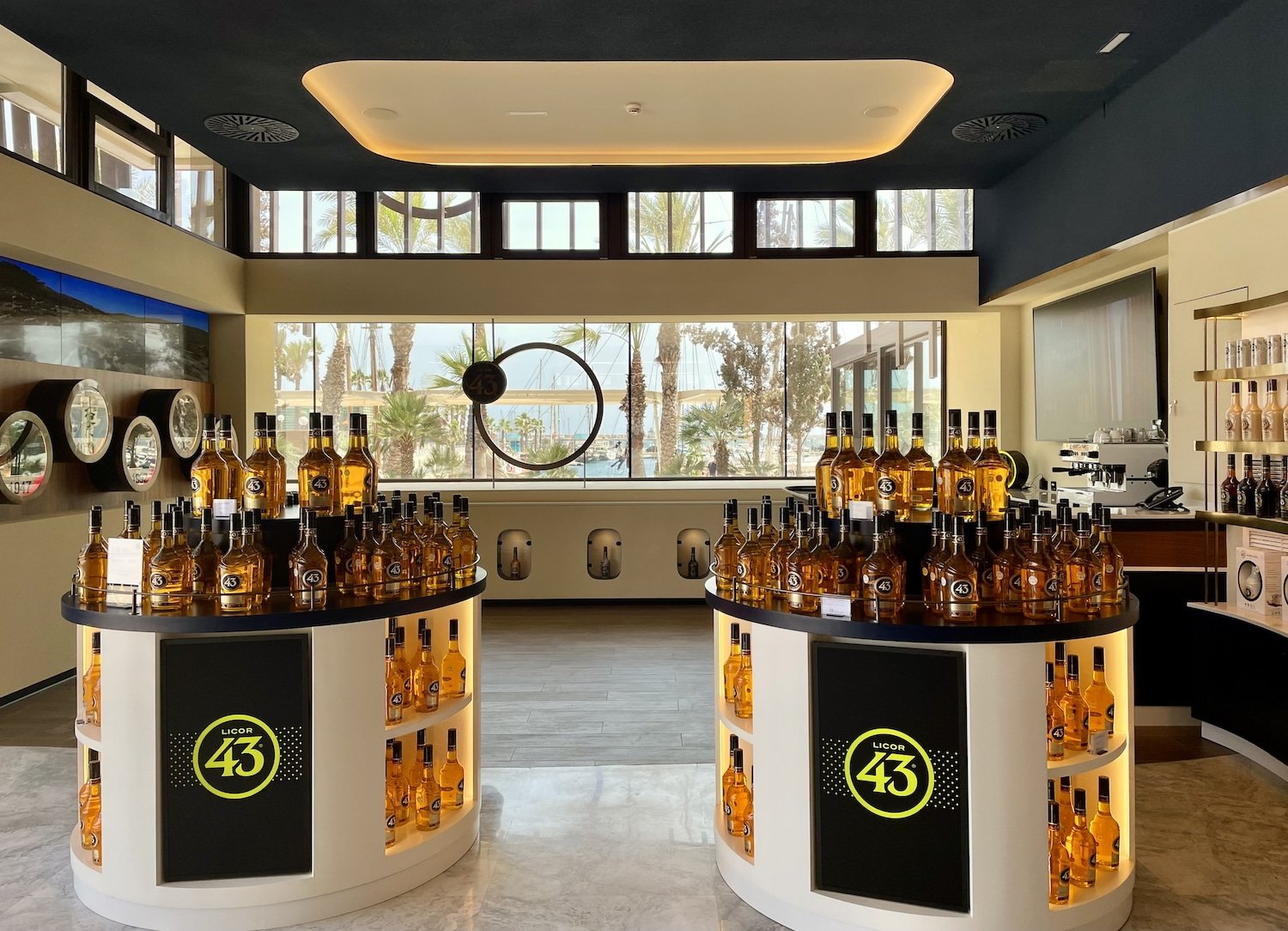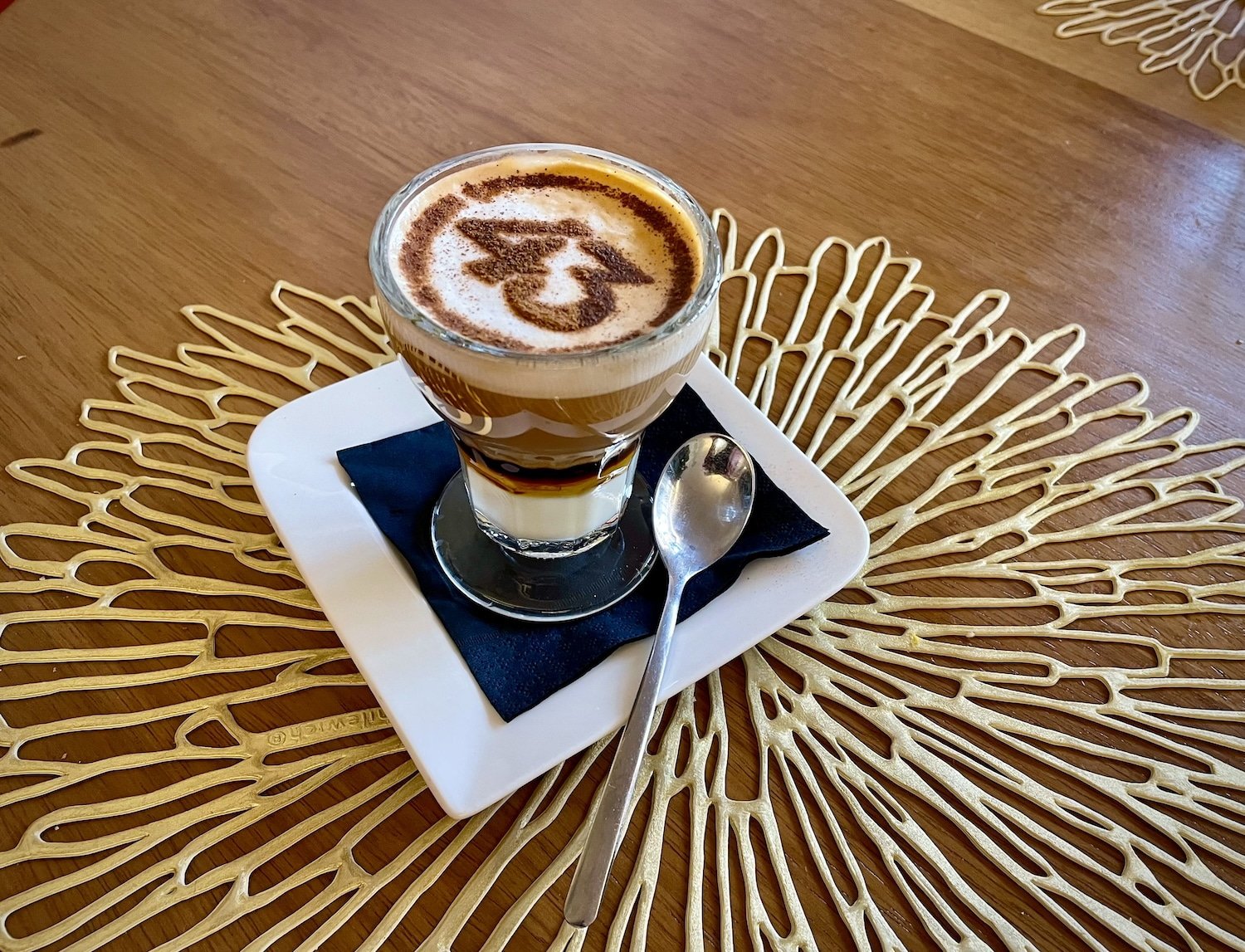What You Should Know About Licor 43
Born in an ancient port city, Licor 43 has always had its eyes on the horizon
Licor 43 coffee cocktail
From its humble beginnings in Cartagena, Spain, over 75 years ago, Licor 43 has become the world’s top-selling premium Spanish liqueur. Now present in over 80 countries, the brand, owned by the Zamora Company, broke the million-case barrier in 2022. It ranked #8 among the top-trending liqueurs in the 2024 Drinks International Brands Report.
This growth has something to do with the sea. With its naturally protected harbor on the Mediterranean coast, Cartagena has been a trading hub since antiquity. Roman merchants plied the waters in wooden ships, carrying amphorae filled with olive oil, wine, and the region’s famed fermented fish sauce, garum. Today, container and cruise ships come and go, transporting people and goods to and from far beyond Mare Nostrum (“our sea”), as the Romans called the Mediterranean. The call of the horizon is part of Cartagena’s DNA.
Roman amphorae found off the coast of Cartagena photo credit Ansley Evans
“Cartagena has always held great significance due to its strategic location and the opportunities having a port offers us,” wrote Blanca de la Infiesta, Global Marketing Spirits Director for the Zamora Company, in an email.
But beyond pure geography, what has most influenced the brand’s identity, she says, is the founders’ forward-thinking spirit. “It would have been impossible for Licor 43 to be where it is today without their entrepreneurial vision.”
What is in Licor 43?
A top-secret blend of herbs, fruits, and spices, Licor 43, as the name suggests, contains 43 natural ingredients. Only three people in the founding family know the exact recipe, but the brand has revealed 5 components—orange, lemon, coriander, green tea, and vanilla.
The liqueur has a complex flavor profile with citrus, botanic, and floral notes and distinct vanilla tones, united by a balanced sweetness. Held up to the light, it has a crystalline golden hue likened to the color of a Mediterranean sunset. It contains 31% alcohol by volume (ABV).
A Versatile Liqueur
With its sweet vanilla base, Licor 43 has a particular affinity for coffee. It is a key ingredient in emblematic coffee cocktails around the world, including the Cartagena-born Asiatico, the Canary Islands’ Barraquito, and Mexico’s Carajillo. Read more about the Carajillo.
Joe Arakawa, photo courtesy of Joe Arakawa
But it would be a mistake to pigeonhole the liqueur as a mixer for coffee only. “With a slightly higher ABV than other liqueurs, it’s easier to mix with,” says Joe Arakawa, Beverage Director for EDO Hospitality in Las Vegas and a finalist in the 2023 Licor 43 Bartender & Barista Challenge. “It’s not overly sweet and has some complexity and spice to it. It’s a great ingredient to play around with.” He’s seeing it more and more in spirit-forward and citrus-forward cocktails.
At Animo by EDO—named Yelp’s best new US restaurant in 2023—Arakawa and his team expertly explore the liqueur’s possibilities. Leaning on its citrusy, vanilla, and spice notes, they use it to make variations of classics like the Batanga. Licor 43 adds complexity and complements the reposado tequila, says Arakawa. They also use Licor 43 instead of sugar in the Old Fashioned, “for a Spanish twist.”
Arakawa’s award-winning drink for the Licor 43 Barista & Bartender challenge, Dawn Patrol, exemplifies the liqueur’s versatility. Inspired by his childhood in Oahu, it features Molokai coffee, coconut, and ginger and pairs well with Spam musubi.
Other competitors mixed additional liquors into their entries. But “[Licor 43] is bold enough to stand alone,” says Arawaka. “It has enough complexity that it’s not going to be washed out by other flavors.”
Arakawa knows people in the industry who don’t carry Licor 43 because they don’t serve Carajillos or coffee. But he sees it as a more serious tool for bartenders.
“For its simplicity and diversity,” he says, “it’s a great bottle to have on your back bar.”
The Origins of Licor 43
The Zamora family launched Licor 43 in 1946 in a small neighborhood distillery, less than a decade after the Spanish Civil War had ended. Dictator Francisco Franco was in power, and much of the country struggled economically. The founders had little means but big dreams.
In creating Licor 43, the family drew inspiration from Cartagena’s ancient glory days. According to company lore, they based their recipe on a local drink of legend, Liqvor Mirabilis, marvelous liquid—an elixir infused with fruits and herbs. It is said that the Romans banned it when they conquered the city from the Carthaginians but that locals continued to make it clandestinely.
The seal on the bottom of each Licor 43 bottle—featuring a chariot, “43” in Roman numerals (XLIII), and the words Liqvor Mirabilis—subtly recalls the origin story. But beyond this legend, the brand is not known for looking back.
Marketing Ingenuity
Early ads at the Licor 43 museum photo credit Ansley Evans
Intriguing origins and secret ingredients are part of the Licor 43 mystique. The company has always excelled at marketing. This is the leitmotif at the Licor 43 museum in Cartagena, a journey through the brand’s history and savvy advertising campaigns.
From the start, the founders took every opportunity to promote Licor 43, which was no easy feat in the post-war period. They ran print ads with the tagline, “el mejor licor de todos los tiempos”—the best liqueur of all times. They teamed up with celebrities and wrapped Licor 43 bottles in cellophane like other luxury products of the day. When TV arrived in Spain in the 1950s, the company was among the first to place commercials on the state-run TV station.
Spain’s fledgling tourism industry opened the door to international expansion in the 1960s. Bikini-clad sunseekers from Northern Europe brought a breath of modernity to the country and money to spend. With its red and yellow label of the time (the colors of the Spanish flag) and warm golden hue, Licor 43 captured Spain’s sun-drenched Mediterranean coast in a bottle. It made for a perfect souvenir.
In the 1970s, the company created the Pilé 43 cocktail—Licor 43 over shaved ice—to shake the liqueur’s image as a digestif only. They promoted it in psychedelic-style ads that spoke to youth longing for freedom. In 1975, the year Franco died, the brand released an ad for the cocktail with the slogan, “Si eres libre para vivir, eres libre para elegir”—if you are free to live, you are free to choose.
These early efforts paid off, converting Licor 43 into the top national spirits brand and setting a precedent for global growth fueled by clever publicity.
Innovative Twists on the Original
The original Licor 43 remains the same, but the brand has experimented with variants to keep up with trends. New products include the award-winning Licor 43 Horchata (100% vegan) and Licor 43 Chocolate. There’s also Licor 43 Baristo, blended with coffee from the Canary Islands, and the limited-edition Licor 43 Crème Brûlée.
“This type of innovation is one of our ways of adapting to changing times,” according to de la Infiesta. “We’re maintaining the essence of our brand while responding to the demands of today’s market.”
“They’re doing a good job of choosing their battles on where to expand their brand,” says Arawaka who adds that the variants are very good and very versatile. At Anima by EDO, they use Licor 43 Horchata, for instance, as a dairy-free cream alternative in the Grasshopper.
Committed to Cartagena
Licor 43 showroom photo credit Ansley Evans
Still owned by the founding family, the Zamora Company has grown into an international firm known for helping brands expand globally. Alongside Licor 43, the company oversees a growing portfolio, including Ramón Bilbao wines, Martin Miller’s gin, and Yellow Rose whiskey from Texas.
As the company continues to grow abroad, it remains invested in Cartagena. Licor 43 is made from start to finish at the brand’s hometown factory, which also houses the museum and offers tours with tastings, known as the Experiencia Licor 43. In 2023, the company opened Cuarentaytrés (“43” in Spanish)—a showroom, event space, and restaurant led by Pablo González-Conajero, a chef from Murcia with two Michelin stars. Located in the port of Cartagena, the complex faces the sea.
Asiatico at Cuarentaytres photo credit Ansley Evans
Backlit bottles of golden Licor 43 feature prominently in the décor, along with nautical ropes and amphorae, nods to the city’s seafaring roots. This legacy is also evident on the menu, with specialties such as salazones—salt-cured fish such as tuna and mullet row. Licor 43 stars in desserts like crème brûlée topped with Licor 43 Horchata ice cream. And, of course, they serve excellent Asiaticos.
“We aim to become a culinary destination, showcasing regional products through innovative experiences and pairings with Zamora Company’s wines and spirits,” says de la Infiesta. Conceived for locals and tourists alike, “the project’s philosophy is to give back to the city for what it has given us.”
The adjacent showroom, an airy space warmed with that Licor 43 glow, sells far beyond the original liqueur and its variants. It also carries a variety of Licor 43 merch, including glassware, retro tee shirts, and Licor 43-scented candles and lip balms—perfect for taking back to a stateroom.
The horizon beckons.
Licor 43 Cocktail Recipes
Ginger 43
Ginger 43 served at the Experienca 43 photo credit Ansley Evans
This popular cocktail in Spain combines Licor 43 with ginger ale for refreshing results with a hint of spice.
Ice cubes
1 part (50 ml) Licor 43 Original
4 parts (200 ml) ginger ale
Juice of ½ lime
Lime slices and twist for garnish (optional)
Fill a glass with ice cubes and let sit for a few minutes to chill the glass.
Pour the ginger ale over the ice, then add the Licor 43 Original and lime juice.
Stir gently to blend and garnish with lime slices and a lime twist, if desired.
Dawn Patrol
Dawn Patrol cocktail, photo courtesy of Joe Arakawa
This winning cocktail Joe Arawaka created for the 2023 Licor 43 Bartender & Barista Challenge was inspired by his childhood and young adult life on Oahu, “Chasing sunrises all through the night.” It also honors what he calls the rich coffee culture and blessings that surrounded him in his youth.
7 g fresh ginger, peeled
45 ml Licor 43 Original
20 ml lime juice
1 large egg white (30 ml)
15 ml coconut water
30 ml Molokai cold brew concentrate (see Notes)
5 × 0.25-ml drops 80:20 (water to salt) saline solution
Freshly grated cinnamon
Place the peeled ginger in a shaker and crush with a muddler.
Add the remaining ingredients, except the cinnamon, to the shaker.
Dry shake vigorously for 20 seconds.
Fill the shaker with ice and wet shake vigorously for 20 seconds to create froth and dilute.
Double-strain into a 7-oz. sour glass.
Sprinkle with freshly grated cinnamon.
Serve with Spam musabi or other snacks of your choice.
Note: To prepare the Molokai cold brew, medium-grind 200 g Molokai coffee beans and place in a container with 800 ml filtered water. Cover with a lid or plastic wrap (placing the grinds in cheesecloth makes the end straining easier but is not essential). Let cold-steep for 16 hours in the fridge, then fine-strain through a paper coffee filter. Transfer to a clean container with a lid and store in the fridge for up to 5 days.








